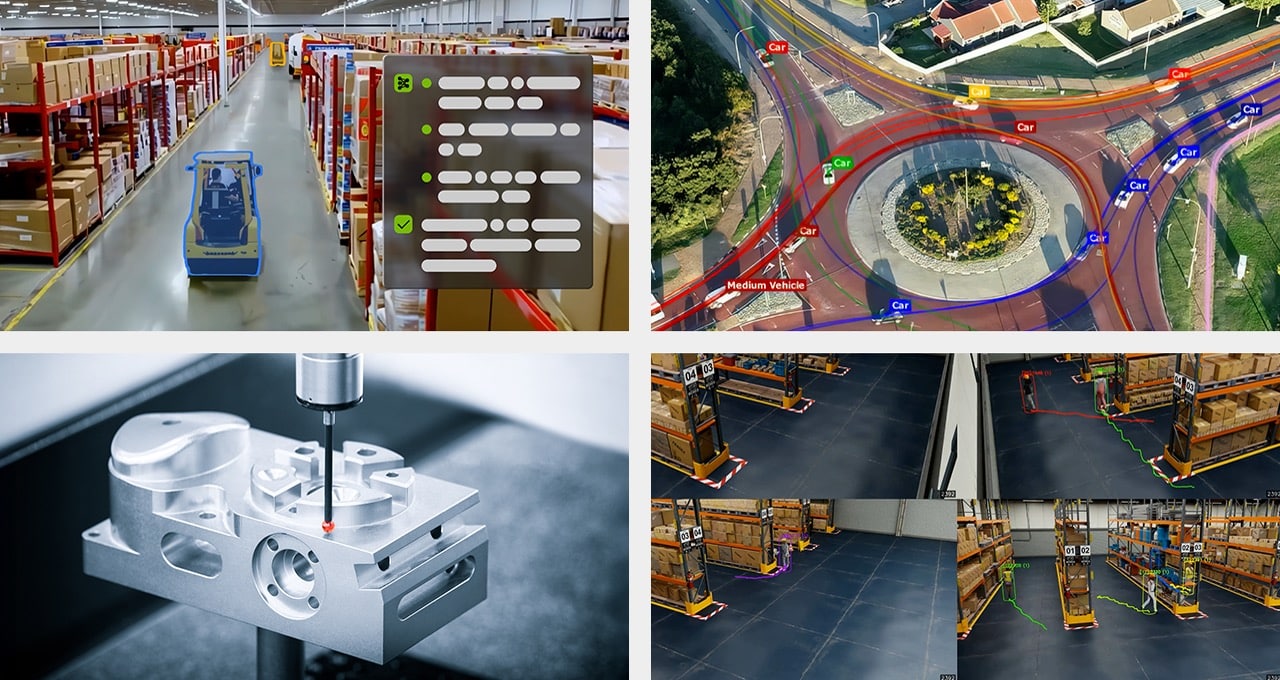The physical AI—driving modern robotics, autonomous vehicles, and smart spaces—advances through a unique combination of neural graphics, synthetic data generation, physics simulation, reinforcement learning, and reasoning models with artificial intelligence. NVIDIA Research, with nearly two decades of experience in AI and computer graphics, is leading this technological convergence.
During SIGGRAPH, the premier global conference on computer graphics held in Vancouver until August 14, NVIDIA Research team members presented key innovations that are laying the groundwork for physical and spatial AI. Notable among these are new software libraries, updates to the NVIDIA Metropolis platform for computer vision, and the launch of NVIDIA Cosmos Reason and NVIDIA Nemotron—reasoning models designed to help robots and AI vision agents understand and act with human-like common sense.
The Link Between Graphics, AI, and Robotics
Developing physical AI requires creating high-fidelity, physically accurate virtual 3D environments. These virtual worlds allow for safe training of humanoid robots and autonomous systems before deployment in the real world. Without this realism, skills learned in simulation wouldn’t transfer effectively to real-world scenarios.
Examples include an agricultural robot able to apply exact pressure to pick peaches without damaging them, or a micro-electronic assembly robot where every millimeter counts.
According to Ming-Yu Liu, NVIDIA’s Vice President of Research, “Physical AI needs a virtual environment that feels real—a parallel universe where robots can experiment and learn through trial and error.” Achieving this requires real-time rendering, computer vision, physical motion simulation, generative 2D and 3D AI, and reasoning models.
Key Technical Innovations Presented at SIGGRAPH
ViPE (Video Pose Engine)
Developed by Sanja Fidler’s Spatial Intelligence Lab, in collaboration with the Dynamic Vision Lab and NVIDIA Isaac team, ViPE is a 3D geometric annotation engine for video. Using everyday or professional footage, it estimates camera movement and generates detailed depth maps, useful for scene reconstruction and training physical AI models.Realistic Physics-Based 3D Reconstruction
A new approach addresses the challenge of generating 3D geometries that are visually accurate but physically unstable. This ensures, for instance, that a chair reconstructed from video won’t collapse when simulated in a physical environment.Advanced Physical Animation
Combining motion generators with physics-based controllers, NVIDIA has created synthetic data for complex movements like parkour stunts, enabling humanoid robots to perform tasks in challenging terrains or emergency rescues.AI-Driven Material Modeling
Using diffusion models and differentiable physically-based rendering, realistic textures—such as wear or aging—can be added to 3D objects with simple text prompts, streamlining virtual environment creation for industrial simulation or gaming.Optimized Light Simulation
A new differentiable visibility querying method allows faster, more accurate reconstruction of 3D geometries from images and videos, connecting direct (3D to 2D) rendering with inverse (2D to 3D) generation.
From Research to Industrial Application
These advancements are not purely academic. They are part of the NVIDIA Cosmos ecosystem, introduced this year, which includes foundational physical world models, post-training libraries, and an accelerated data processing and curation pipeline.
The integration of neural rendering, physics simulation, and reasoning models is paving the way for training robots and autonomous systems capable of operating in complex environments—ranging from smart cities to high-precision factories.
Frequently Asked Questions
What is physical AI?
It’s an AI approach that combines perception, reasoning, and action within the physical world, trained in accurately simulated virtual environments.Why is simulation crucial in this field?
Simulation enables safe training and testing of complex systems before real-world deployment, reducing costs and risks.What role does NVIDIA Cosmos Reason play?
It’s a visual language reasoning model designed for agents and robots to understand contexts, apply prior knowledge, and make decisions grounded in common sense.Which sectors can benefit from these advances?
Robotics, automotive, advanced manufacturing, smart cities, defense, and logistics.
Via: blogs.nvidia.com

